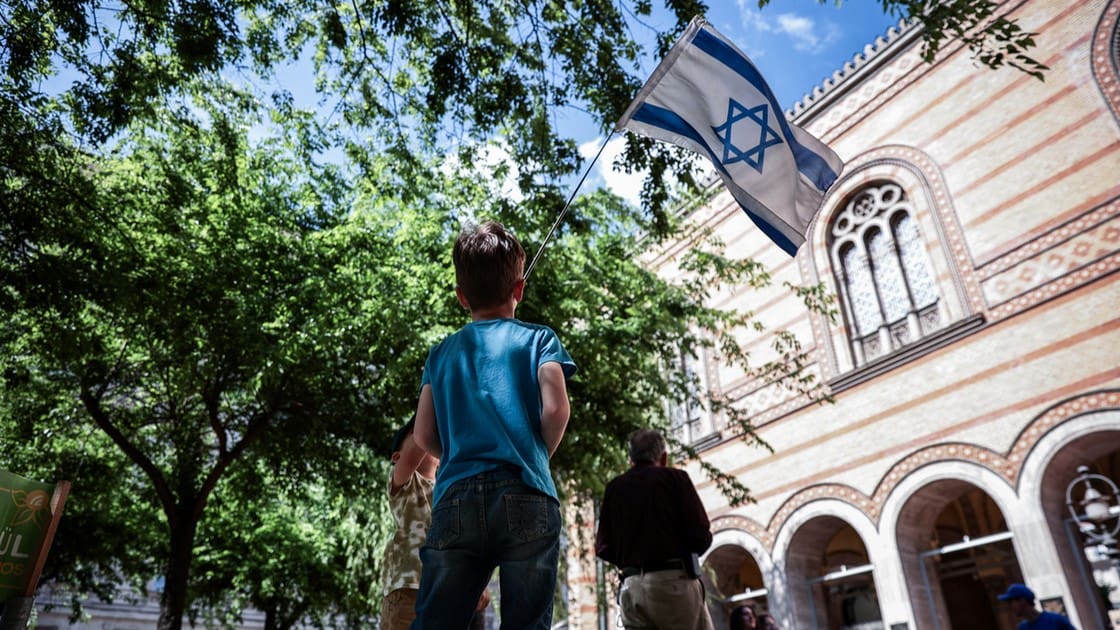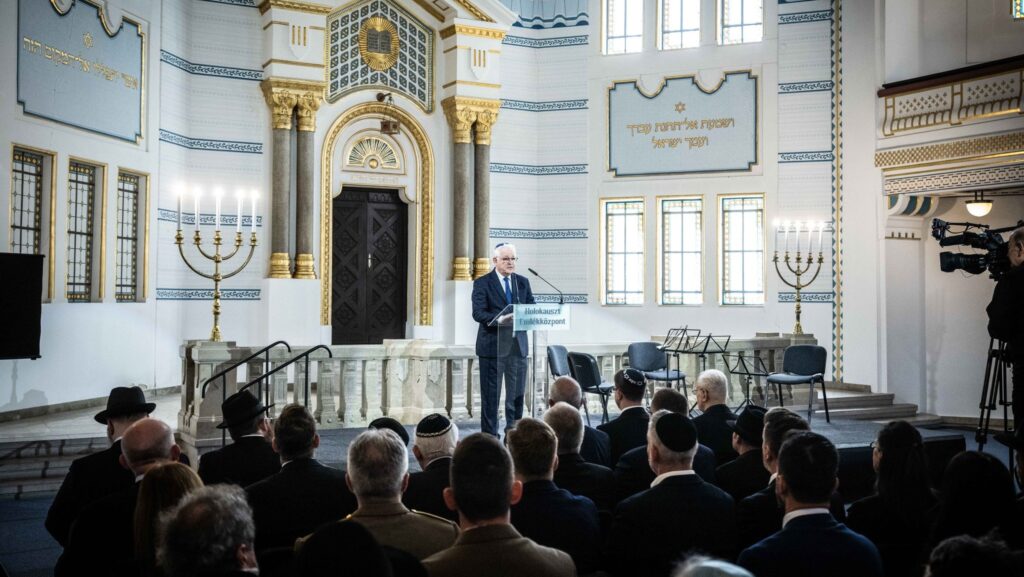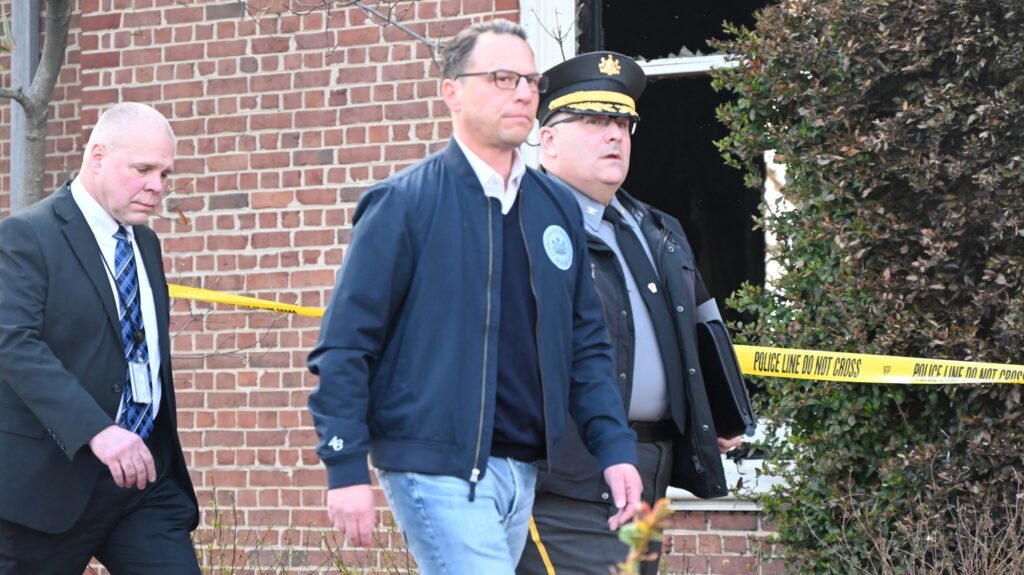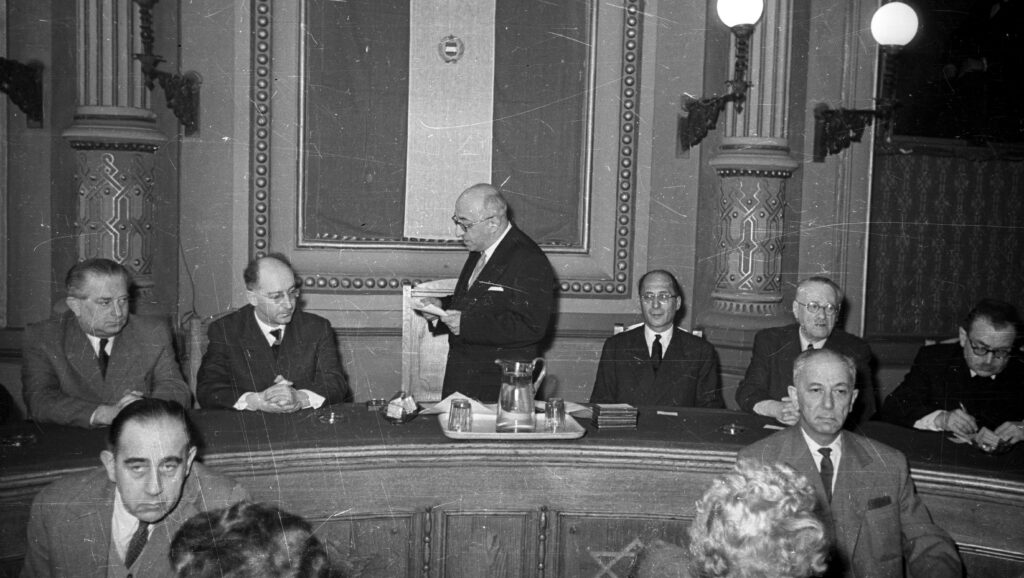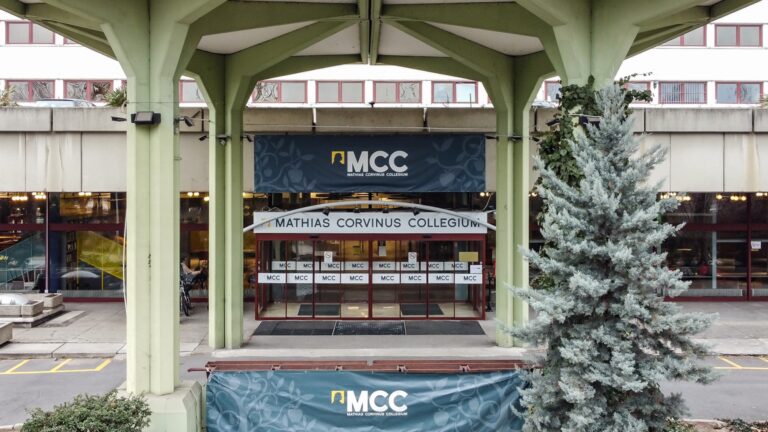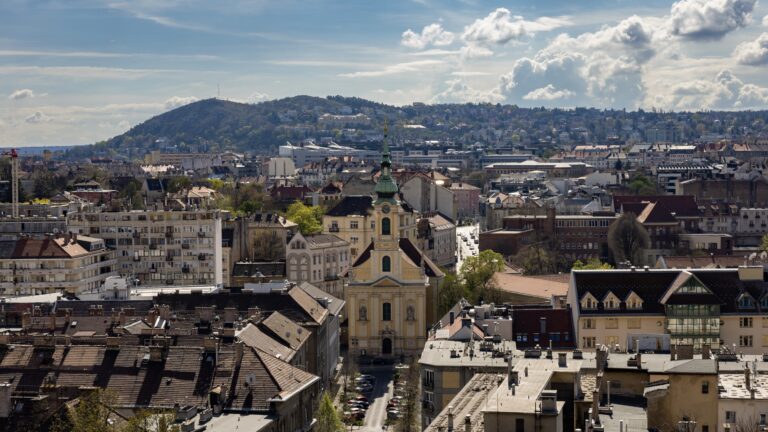Marking 80 years since over 550,000 Hungarian Jews were murdered during the Holocaust, the 20th March of the Living was held in Budapest on 5 May, a few hours before the eve of Yom HaShoah, Holocaust Remembrance Day. The march started from the Dohány Street Synagogue, also known as the Great Synagogue—the largest synagogue in Europe—next to the birthplace of the founder of modern Zionism, Theodore Herzl, and ended at Keleti (East) railway station, some two kilometres away from which the first transports embarked to Auschwitz in the spring of 1944. Thousands of Jews and non-Jews walked behind the fleet of electric minibuses transporting the Holocaust survivors.
According to Yad Vashem, at the time of Germany’s occupation of Hungary in 1944, the Jewish population was over 800,000 strong. In just eight weeks, between May and July 1944, over 434,000 Hungarian Jews were deported, mostly to Auschwitz, where about 80 per cent were gassed on arrival. Before the march started, a memorial dedicated to 440,000 Hungarian Jews deported and killed between 15 May and 9 July 1944 was inaugurated in front of the synagogue.
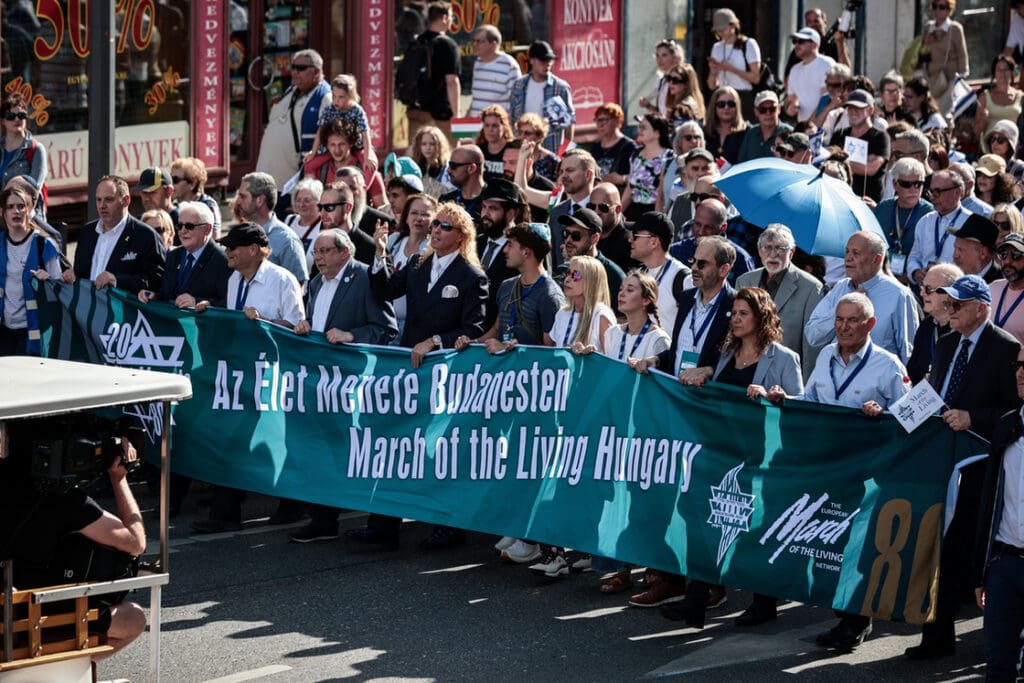
As mayor of the 7th district Péter Niedermüller said, it was ‘Hungarian society’s grave moral failing and sin that we couldn’t protect our Jewish compatriots. Commemoration is a way to reflect on past developments, but it also obliges participants to pass on the message that hatred and inciting hatred destroys society.’ He stressed that
anti-Semitism and anti-Israel sentiments are on the rise and that ‘It is our right and obligation to stand by Israel.’
The March of the Living in Budapest, started by the sound of shofar, was led by nearly 100 Holocaust survivors, including the world’s oldest Olympic Champion Ágnes Keleti, Aviva Keinan, and Marian Miller from Israel. At the main ceremony, Marian Miller performed an emotional song written by her cousin, Gábor Erdős—It Is Not Really Goodbye—with Israeli singer Tal Sondak to commemorate the half million child victims of the Holocaust. Gábor wrote the song before his execution by the Danube River when he was only 13, just a few days before the liberation.
As Jewish Agency Chairman Doron Almog said in his speech, ‘March of the Living also symbolizes that we declare we will never give into antisemitism.’
Gábor Gordon: ‘7 October was a Holocaust that lasted for a day’
This year’s March of the Living in Budapest also honoured those murdered during Hamas’s massacre on 7 October in Israel. Head of the boards of trustees of the March of the Living Foundation Gábor Gordon highlighted in his speech that ‘the horror of the Holocaust must be remembered as one of the largest massacres of mankind, but, at the same time, we must celebrate a love of life and a will to live.’ He greeted the Holocaust survivors participating in the commemoration, whom he called ‘the true VIP guests of the event, who overcame death with their will to live.’ He reflected on Hamas’s 7 October massacre, which he compared to a ‘Holocaust that lasted for a day’ and stressed that it’s worrying that not only in Muslim countries but also in the major cities of Western civilization, people are celebrating the murderous terrorist actions of Hamas.
Israeli President Isaac Herzog sent a video message to the event, in which he highlighted that the Holocaust has stood out in the crimes of mankind throughout world history but added that the Jewish community has been mourning over the deep tragedy of recent months as well. He stressed, ‘those killed, tortured or kidnapped and those who are still in captivity cry out to us for justice and freedom, for their right to life.’
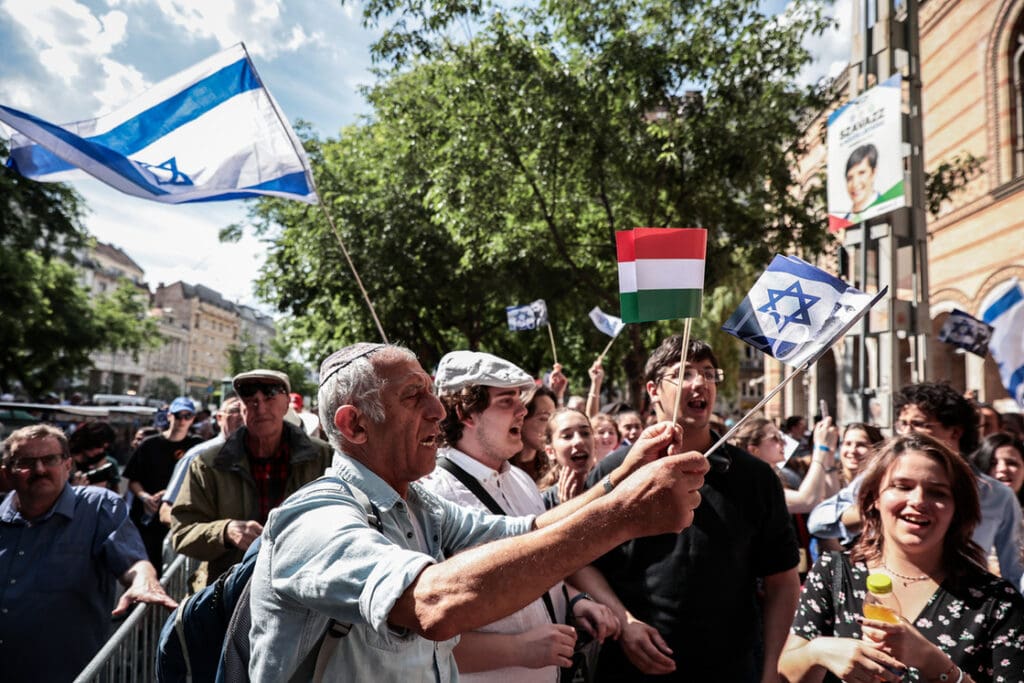
Deputy director of the International March of the Living organisation Baruch Adler stated that the annually organized event symbolizes the victory of good over evil forces. Adler commemorated the Ukrainian villager who hid Adler’s mother during the Holocaust, even though it had put the life of the villager’s own family at risk. Referring to the 7 October massacre, Adler highlighted that the silence of the world was ‘deafening’, and the promise of ‘never again’ rang hollow when he saw the brutality. He also stressed that citizens of a free world should feel ashamed for passively watching history repeat itself.
Mein Kampf Found in Home of Hamas Commander Displayed at March
During his speech, Davidi Ben Zion, Deputy head of the Samaria Regional Council and member of the KKL-Junk Board of Directors, presented a copy of the book Mein Kampf written by Nazi leader Adolf Hitler, which was found during the war in the house of a Hamas commander in Khan Yunis.
Major (res.) Ben Zion, who fought in Gaza, specifically brought with him the book that was translated from German to Arabic and found by his soldiers during the Israel–Hamas war. ‘A few months ago, when we were serving in Gaza, we came across a chilling reminder of the darkest chapter of humanity: Mein Kampf. We found this book in the home of a Hamas commander in the town of Bani Suheila in Khan Yunis’—Major (res.) Ben Zion said in his speech. He added, ‘Today, when we are at a gathering of solidarity with the Jewish people, our hearts are with the brave IDF soldiers, who stand at the front and defend our homeland against terrorism and hatred in all sectors. Our thoughts and prayers go to our kidnapped brethren, innocent victims held captive by the Hamas terrorist organization in Gaza in inhumane conditions. Our hearts ache with their families, and we all hope for their safe return soon.’
Israel’s ambassador to Hungary Yacov Hadas-Handelsman highlighted that the Hamas attack on Israel last October gave this year’s march a special significance. He noted, ‘Education of the younger generations is even more important now, giving them inspiration to fight racism, discrimination, and injustice.’ The ambassador asked, ‘Who would have thought that 80 years after the Holocaust, Jews would once again feel fear around the world?’ At the same time, he described Hungary as an island of renewal with a thriving Jewish community.
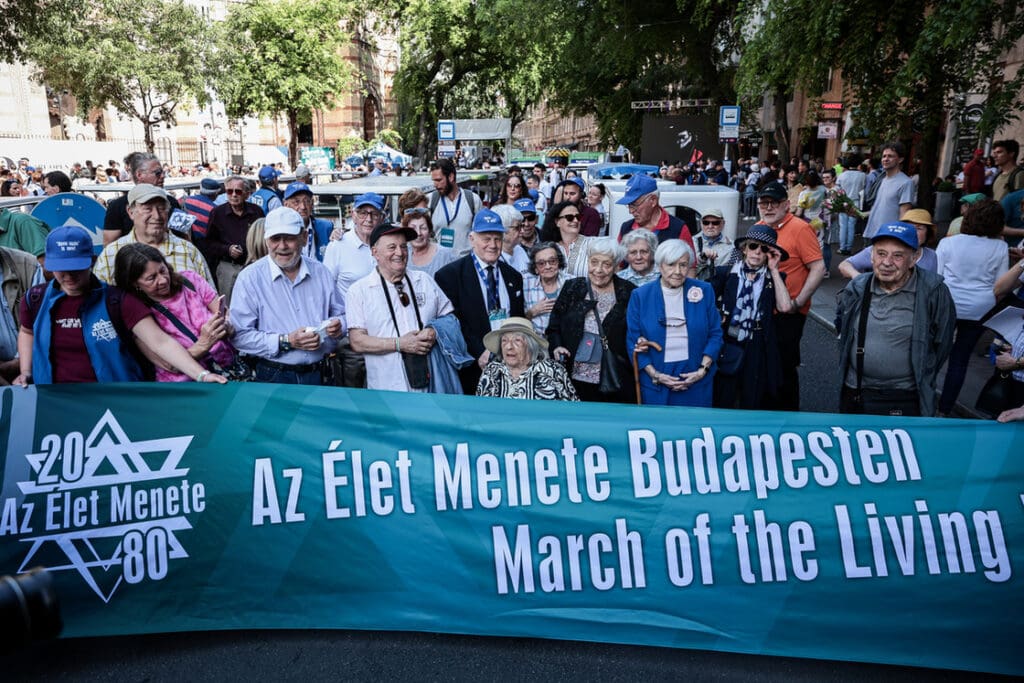
Lights of commemoration were lit at the end of the event in memory of the victims of the Holocaust and the terrorist attack in Israel on 7 October. Candles were lit along with participants, including Cardinal Péter Erdő, head of the Hungarian Catholic Church; Founder and Senior Pastor of Faith Church Sándor Németh; President of the Federation of Hungarian Jewish communities Mazsihisz Andor Grósz; Deputy leader of the United Hungarian Israelite Community László Győrfi; President of the Autonomous Orthodox Jewish Community Gábor Keszler; winner of the Righteous Among the Nations award Iván Abonyi, who hid five people with her family in their Budapest apartment; as well as Holocaust survivors and students.
After the ceremony concluded, the Train of the Living embarked from the Keleti railway station to Oświęcim with 500 students, who conducted a night-time vigil on the train to commemorate the ‘death trains’ that departed from the station over 80 years ago with more than 400,000 Hungarian Jews on board. The Hungarian delegation arrived at the March of the Living in Poland on the morning of Yom Hashoah, between the Auschwitz–Birkenau extermination camps.
International March of the Living at Auschwitz: A Renewed Cry of ‘Never Again’
The 36th International March of the Living continued in a march from Auschwitz to Birkenau extermination camps with the participation of 8,000 people from all over the world, including 55 Holocaust survivors.
This year’s March of the Living held even greater significance,
as the horrors of the past intertwine with the present ongoing nightmare faced by the State of Israel. As Chairman Dr Shmuel Rosenman and President of the International March of the Living Phyllis Greenberg Heideman stated, ‘The recent massacre on 7 October serves as a constant reminder of the persistent threat posed by anti-Semitic hatred.’
Many participants gathered at the entrance of the Auschwitz extermination camp, draped in Israeli flags; some were wearing shirts with the slogan ‘Bring them home’ and displayed pictures of the hostages referring to the hostages still held in Gaza.
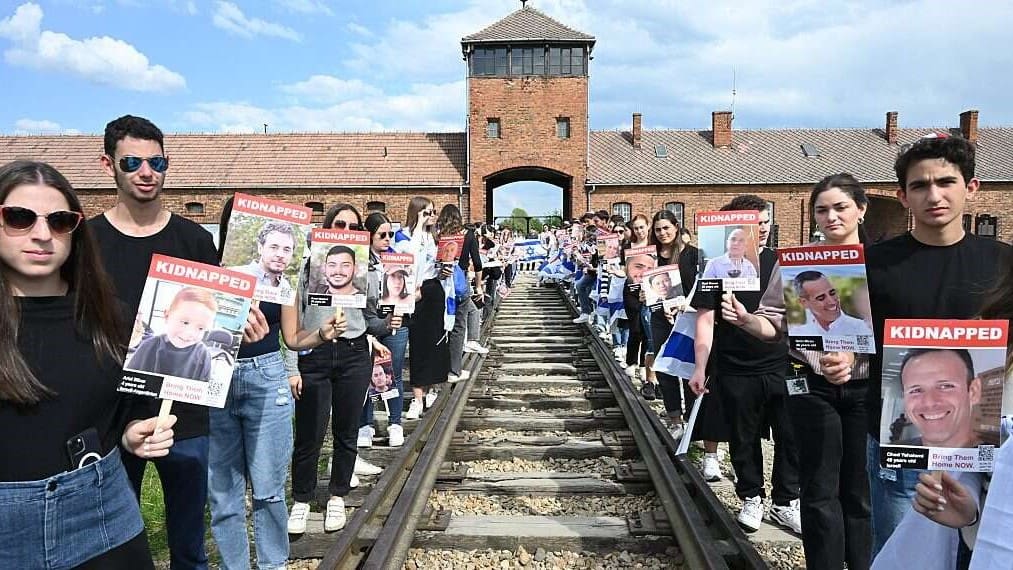
The March began with Holocaust survivors and dignitaries blowing the shofar, urging the crowd to reject antisemitism. Thomas Hand, the father of a former 8-year-old captive named Emily Hand, also participated in the March. He recalled the terrifying moments when he realized his daughter was in the hands of Hamas. ‘We somehow got her back. It was a miracle,’ he noted. Gabriella Karin, one of the 55 Holocaust survivors participating in the March of the Living, said she has dedicated her life to educating the younger generation about the Holocaust. She highlighted, ‘We are all the same. You don’t have to love everybody, but we have to respect every person on this earth. We all have a right to be here.’ 7 October determined much of the content of the event, as well as the main controversy—a small anti-Israel protest staged by nine activists along the march’s route. In a statement, the International March of the Living wrote: ‘The half a dozen protestors who perversely saw this as an opportunity to voice hatred against Israel and the Jewish people serve as a timely reminder of the importance of Holocaust education and remembrance.’
First Torch Lit in Memory of the 565,000 Hungarian Jews Who Perished in the Holocaust
During the closing ceremony that followed the march, six Holocaust survivors from Israel, whose lives were directly impacted by the 7 October attack, lit one of the seven commemorative torches. Normally, only six torches are lit—one for every million Jews killed during the Holocaust. However, to recognize the victims of the 7 October attack, an additional torch was added.
The first torch was lit by the chairman of the March of the Living in Hungary Gábor Gordon in memory of the 565,000 Hungarian Jews who perished in the Holocaust.
As part of the commemoration of the Hungarian victims, special emphasis was placed on the 37 paratroopers from Israel, who also joined the war against the Nazis. One of these paratroopers was Hanna Szenes, a young woman who left Hungary after experiencing severe anti-Semitism in high school and emigrated to Israel in 1939. In 1944, Hanna was sent to rescue Hungarian Jews, including her family, who were about to be sent to death in Auschwitz. On 7 November 1944, Hanna Szenes was captured and executed by the Nazis. She was honoured with a statute recently at a ceremony at her birthplace in Budapest, Hungary.
In 1942, sitting on a beach in Israel looking at the beauty and not knowing what was going to happen, Hanna wrote in Hebrew: ‘Eli, Eli she’lo yigamer l’olam’, meaning: ‘O Lord, My God, I pray that the beauty never ends, the sand and the sea, the rush of the waters, the crash of the heavens, the prayer of humanity.’ The moving poem was set to music by Israeli composer David Zehavi in 1945, which was performed at the event by Israeli singer Noa Kirel, a descendant of a Holocaust survivor grandfather.
Daniel Luz, a France-born Holocaust survivor, who endured the brutal Hamas attack on 7 October, lit the second torch along with other survivors and, while lighting the torch, said in tears: ‘We, who established a home and a state, which was our great victory over the Nazis and antisemitism, light this torch in memory of those who perished in the Shoa and in memory of those murdered on 7 October.’ Luz also recalled feeling a ‘fear greater even than in the Holocaust’ as Hamas terrorists murdered people and burned homes in his Kibbutz Be’eri community.
The March of the Living students, accompanied by the author and Holocaust survivor Nate Leipciger, lit the third torch, saying: ‘We will always stand against the demonization of the Jewish people…if we fail to uphold this pledge, the generations to come will be marching for us.’ Leipciger pointed towards the unloading ramp at the camp and said, ‘I stood on this ramp 81 years ago. Every day could have been my death. Jewish rights are human rights,’ followed by Chairman of the Jewish Agency for Israel Doron Almog, who lit the fourth torch.
Chilean entrepreneur, philanthropist, and supporter of the March of the Living Leonardo Farkas was born into a Hungarian family that lost 55 of its members in Auschwitz. He, along with Eli Beer, the founder of the United Hatzalah organization, lit the fifth torch in honour of the doctors, nurses, and relief organizations that work tirelessly to save lives. Students from Germany, Austria, and Poland lit a torch in honour of those who heroically saved Jewish lives during the Holocaust. As the ceremony concluded, Noa Kirel performed another rendition of Over the Rainbow, a song written on the eve of World War II and Chairwoman of KKL-JNF Yifat Ovadia-Lusky stated that
in spite of the tragedies of the Holocaust and recent events of 7 October, the Jewish people ‘Are here, and here to stay.’
Hatikvah: Hope in the Death Camp
In 2018, I also had a chance to participate in the annual March of the Living at Auschwitz with my school, which was an experience I will never forget. During our two-day journey to Auschwitz, as Reuven Rivlin, the tenth President of Israel put it in his memorial speech, ‘we marched from death to life. From the Holocaust to the rebirth. From Auschwitz to Jerusalem.’ I strongly remember that after visiting Auschwitz for the first time, and seeing where one of the darkest, bloodiest and cruellest genocides of history happened, we got sick at even the thought of having to go back there for the march on the next day. However, the next day, when we arrived at the March of the Living event at Auschwitz, the whole camp had a different atmosphere. Auschwitz was filled with life and hope: 12,000 young and old people remembered the dead and celebrated that life triumphed over death, as the final plan of the Nazis didn’t succeed. One of the most cathartic moments for me at the March happened when the anthem of Israel, the Jewish people’s home, Hatikvah (which in Hebrew means The Hope) was intoned as we left the death camp.
When I participated in the march, the rail track with the main entrance to the former Nazi concentration camp Birkenau was covered with the names of the victims who were relatives of the participants, as a display of remembrance. However, this year’s commemoration met with a grim reality as participants displayed the 130 photos of the hostages still captive by Hamas in Gaza throughout the railway, hoping and demanding their immediate release.

